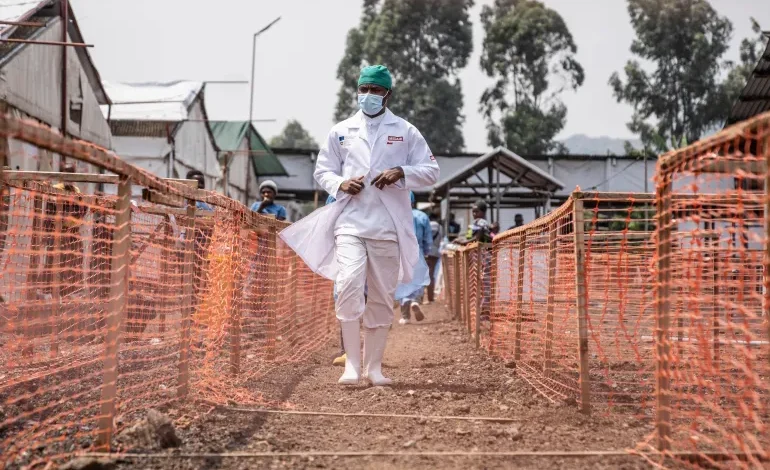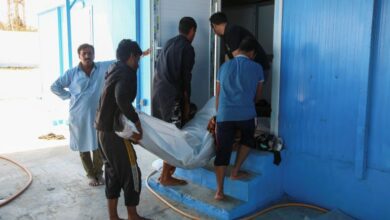Virus hunters: The scientists tracking deadly diseases in tough conditions

It was September 2017 at a teaching hospital in Nigeria’s southern state of Bayelsa. An 11-year-old boy came into the clinic with a fever, rash and lesions on his body.
Infectious disease scientist and Chief Medical Director Dimie Ogoina examined him. At first, doctors thought it could be chickenpox, but after hearing the boy had previously had the illness, they suspected it must be something more serious.
Upon further examination, Ogoina concluded that it was likely monkeypox, a highly infectious disease that causes a skin rash, mucosal lesions and other symptoms the boy was experiencing.
It was a stunning finding. The last case of monkeypox – now called mpox – detected in Nigeria was nearly 40 years earlier. And even then, there were only two cases ever recorded. The country was not prepared for it.
At that point, Ogoina couldn’t be certain of the diagnosis, though. He first had to notify the Nigeria Centre for Disease Control and Prevention, which needed to take a sample and then send it to the Institut Pasteur in Dakar, Senegal, for testing. The process took days, but when the results came in, it was as Ogoina had suspected.
As alarm bells rang through Nigeria, more suspected cases started to stream into his hospital. Every one had to be tested and confirmed from Dakar.
Fear, stigma and speculation grew and were palpable inside the hospital. They were aided by fake theories spreading in the media about “another Ebola” – the haemorrhagic viral disease that hit the country just three years before.
The 11-year-old, on returning home healthy again, was taunted by neighbours as “monkey boy”. Other misconceptions also emerged: One man who’d been traced from an infected female sexual partner refused to report to a hospital, insisting his sickness was a “spiritual attack” and would be cured as such.
Some patients could not bear the fear and waiting.
“We lost [a] patient to suicide – she died even before the results came out,” said Ogoina, who is still on the front lines of detecting and treating mpox cases, seven years since he sounded that first alarm.
Last month, the World Health Organization (WHO) declared mpox a public health emergency of international concern (PHEIC) – its highest alert level. Ogoina sits on the global expert panel that prompted the WHO to issue the declaration.
It’s the second time in two years that the mpox virus is on the move. This time, a new, faster-spreading variant is flitting across continents and sparking concerns of another serious epidemic.
Cases in the new outbreak have been recorded in about 15 countries in East and West Africa, Asia and Europe. This follows dozens of countries reporting cases in a previous outbreak that started in 2022.
The origins and history of mpox go back decades. It was first discovered in Denmark in 1958 in monkeys that were kept for research. The first case in humans was detected in 1978 in a nine-month-old baby in the DRC.
After that, the disease steadily emerged in West and Central Africa, spreading in two distinct strains, clade 1 and clade 2. Since 2005, cases have been reported in the DRC, usually flaring in remote areas and then petering out. But since 2017, when mpox re-emerged in Nigeria, it has spread among people and travellers in the region.
New medical findings
As the 2017 Nigerian outbreak grew, Ogoina’s hospital was forced to improvise.
The country did not have the ability to test for the disease. At the same time, there were also no isolation centres, so his team hastily turned one ward into a cordoned-off area for both male and female patients. Soon, one of the doctors caught the disease.
Added to the physical challenges and limitations, Ogoina had other headaches as well.
Unlike past outbreaks of the disease that were recorded in the DRC, patients were presenting with rashes and lesions on their genitals – areas that most people find sensitive to report in a hospital. Some were instead visiting small medicine kiosks that dot Nigeria so they could treat themselves, meaning more cases were likely being transmitted under the radar.
It is now known that mpox spreads by close contact and skin-to-skin touch with someone who has the disease – including through kissing and sex. But when the first cases were discovered in the 1970s, mpox was thought to be contracted from animals and believed to be more dangerous and common in children.
In 2017, Ogoina noticed that a different population appeared to be most affected.
“I was like, ‘Why are we having young men between 30 and 35?’ I’ve read the literature, and it’s most common among children. … And why are they having genital ulcers?” he wondered.
Many of the patients were also HIV-positive. Ogoina suspected sexual transmission, but this had never been documented before. “I wanted to explore that. I remember even developing a questionnaire to get their sexual history, but people thought I was mad. But I said, ‘This is a new type of mpox.’”
Ogoina put his findings in research papers but was met with harsh pushback. One review of his work read: “It is quite reckless to speculate [about] possible sexual transmission as no epidemiological data are available in the literature.”










